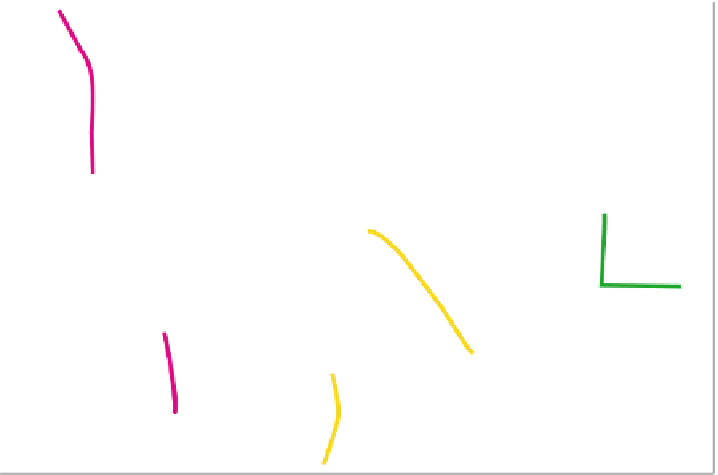Image Processing Reference
In-Depth Information
Fig. 10.7. In real images, linear symmetries often resemble “lines” or “edges” but they appear
even as object or texture boundaries. Some of these are illustrated by colored lines in this
photograph
Example 10.5. The linearly symmetric images appear frequently as local images,
both in images of human-made environments and in images of the nature. They are
often perceived as lines or edges (Fig. 10.7), or as repetitive patterns called tex-
tures (Fig. 10.8). Although the cross sections of their isocurves are seldom like the
ideallinesandedges,theyusuallyhaveawell-distinguishabledirection,withFourier
transform magnitudes concentrated to a line, as Fig. 10.8 shows.
We give precision to the example indications regarding the Fourier transform of
the linearly symmetric images in the following lemma. We recall that the argument
domain of
g
is one-dimensional, whereas that of
f
is two-dimensional by the adopted
convention.
Lemma 10.1.
A linearly symmetric image
f
(
r
)=
g
(
k
T
r
)
has a 2D Fourier trans-
form concentrated to a line through the origin:
F
(
ω
x
,ω
y
)=
G
(
k
T
)
δ
(
u
T
ω
ω
)
(10.8)
where
k
,
u
are orthogonal vectors and
δ
is the Dirac distribution. The vector
ω
is
=(
ω
x
,ω
y
)
T
. The function
G
is the one-dimensional
the angular frequency vector
ω
Fourier transform of
g
.


